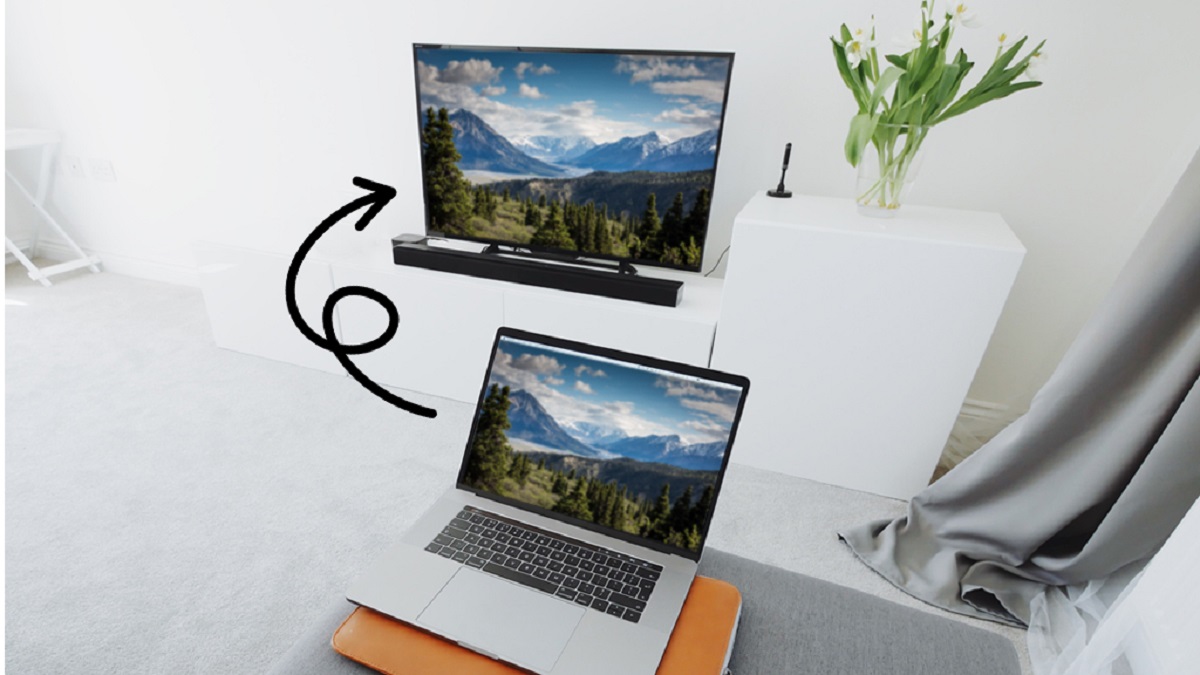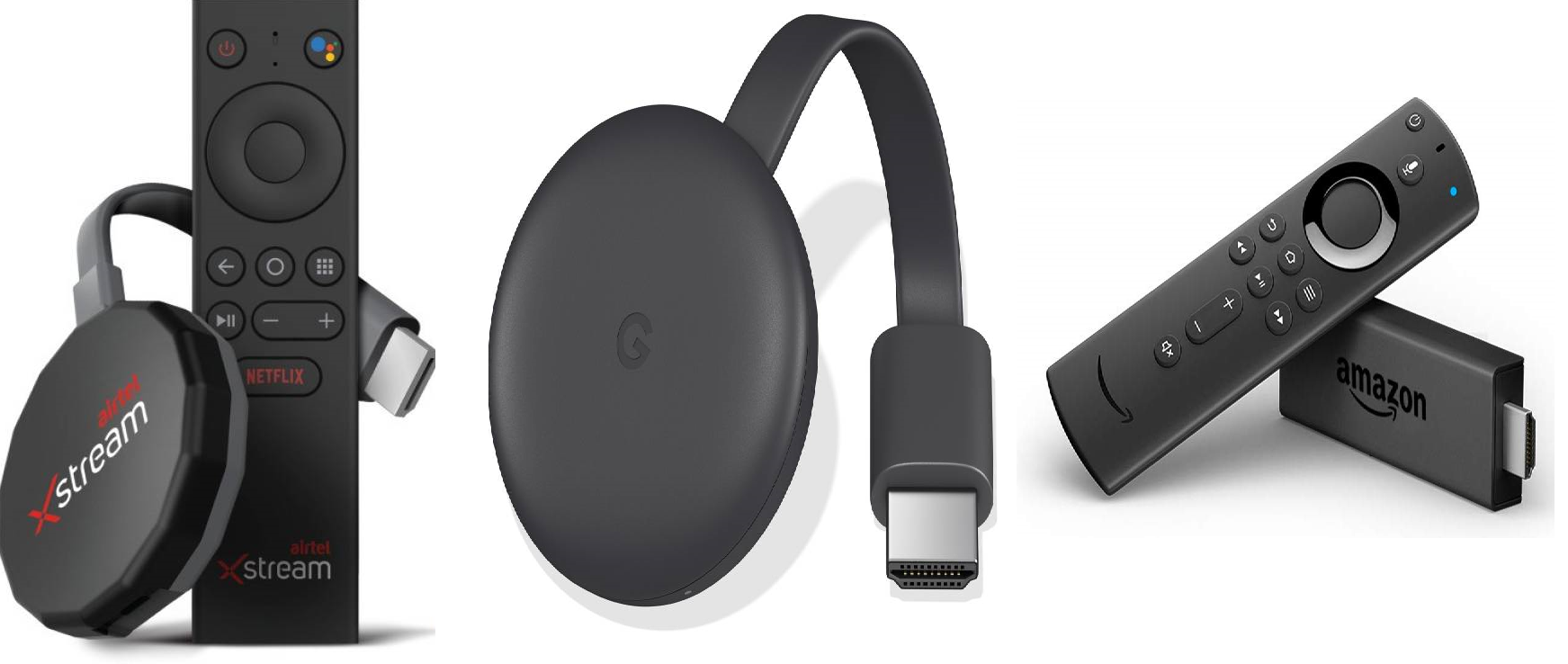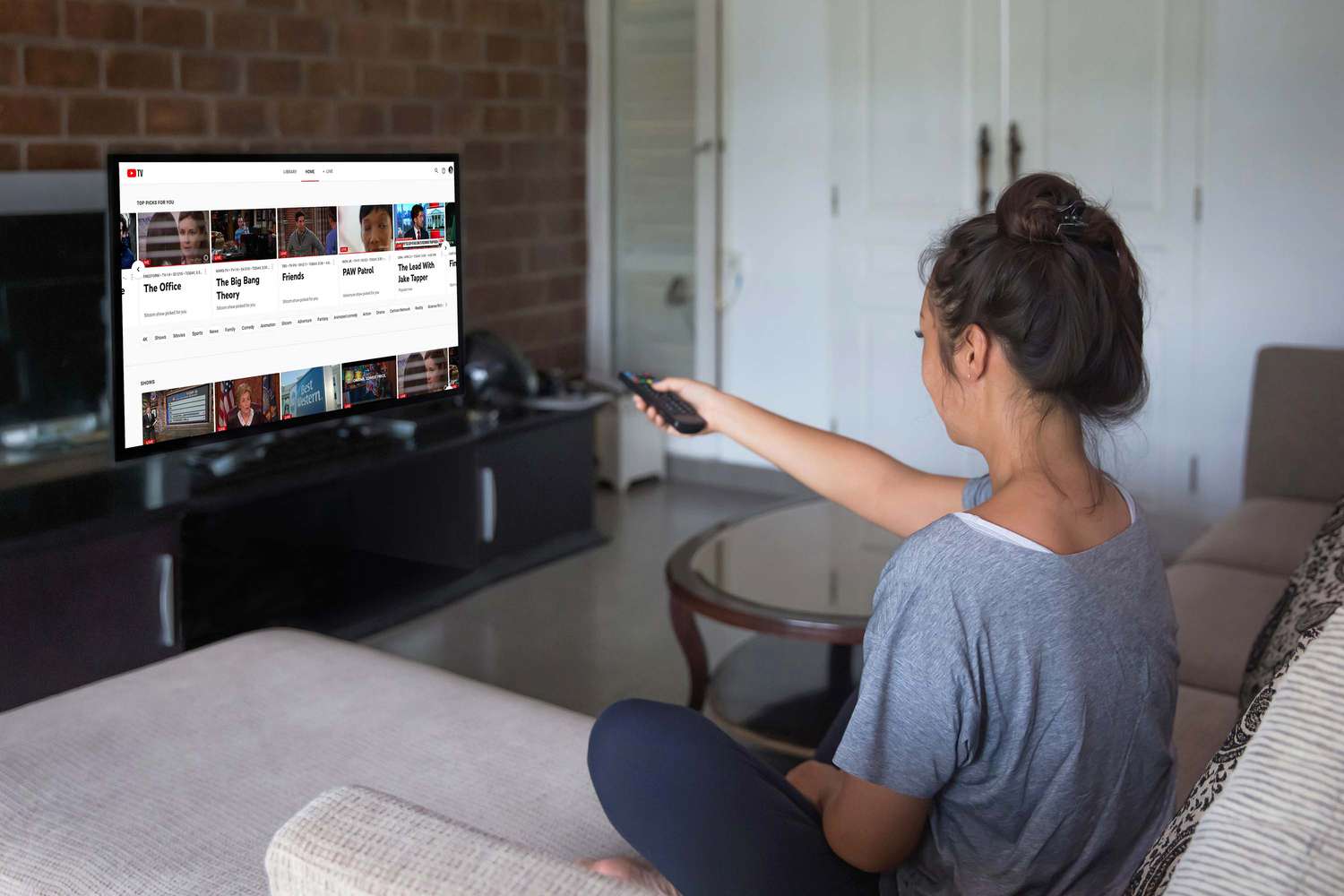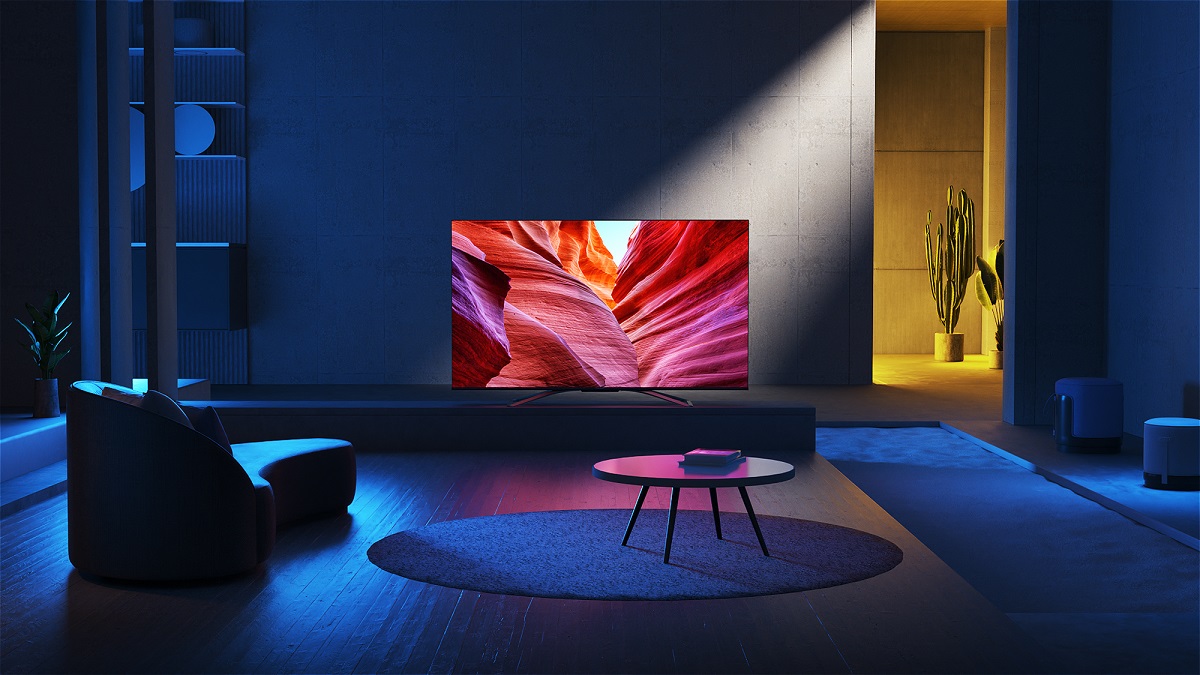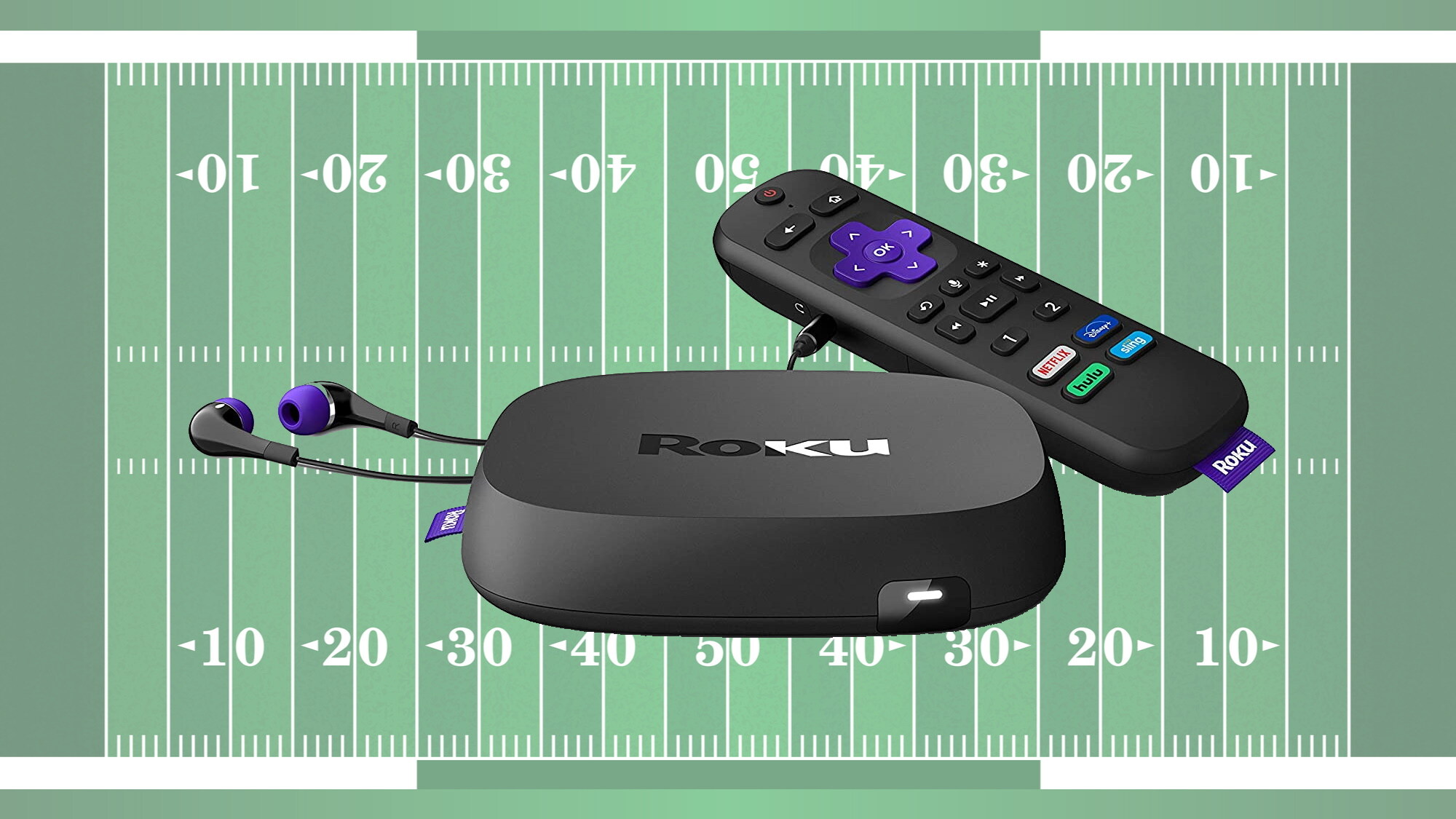Introduction
Streaming content from your computer to your smart TV allows you to enjoy a wide range of multimedia on a larger screen. Whether you want to watch movies, browse photos, or play games, connecting your computer to your smart TV opens up a world of entertainment possibilities.
Gone are the days when you had to rely solely on cable or satellite TV to access your favorite shows and movies. With advancements in technology, streaming has become a popular and convenient way to consume media. By streaming content from your computer to your smart TV, you can take advantage of the larger screen and better audio quality that a TV provides.
In this guide, we will explore the various methods and options you can utilize to stream your computer to your smart TV. From wireless connections to wired setups, there are multiple ways you can achieve seamless streaming and enjoy your multimedia content on the big screen.
Before we delve into the specifics, let’s first understand the basics of how streaming works. Streaming involves sending audio and video data from one device (your computer) to another (your smart TV) over a network connection. This data is transmitted in real-time, allowing you to watch or listen to the content as it is being transmitted, instead of downloading it beforehand.
Streaming also enables you to enjoy a wide variety of content from different sources. Whether it’s your personal media library, online streaming platforms, or even live broadcasts, you can access a vast range of entertainment options by connecting your computer to your smart TV.
So, if you’re ready to enhance your viewing experience and unleash the full potential of your smart TV, join us as we explore the various methods, apps, and troubleshooting techniques to help you stream your computer to your smart TV effortlessly.
Understanding the Basics
Before you start streaming your computer to your smart TV, it’s important to have a basic understanding of how this process works.
At its core, streaming involves transmitting audio and video data from one device to another over a network connection. This data is sent in small packets and is played on the receiving device in real-time, allowing for seamless playback without the need for downloading the entire file beforehand.
There are two main components involved in the streaming process – the sender (your computer) and the receiver (your smart TV). These devices need to be connected and in sync for successful streaming.
To establish a connection, both the computer and the smart TV must be connected to the same network. This can either be a home Wi-Fi network or a wired Ethernet connection. By being on the same network, the devices can communicate with each other and transfer data.
When streaming, your computer acts as the sender, and the smart TV acts as the receiver. The sender device encodes the audio and video data, compresses it into a manageable size, and transmits it over the network. The receiver device then receives the data, decodes it, and plays it back on the TV screen and speakers.
It’s important to note that streaming requires a stable and fast network connection to ensure smooth playback. A slow or unreliable network can result in buffering, lag, or reduced video quality.
Additionally, the format of the media file being streamed also plays a role in the quality of the streaming experience. Most smart TVs support commonly used video formats like MP4, AVI, and MKV. However, it’s always a good idea to check the supported file formats of your specific smart TV to ensure compatibility.
Understanding these basic concepts will help you troubleshoot any issues that may arise during the streaming process. So, now that you have a grasp of the fundamentals, let’s move on to the next section, where we will explore the different methods you can use to connect your computer to your smart TV and start streaming.
Connecting Your Computer to the Smart TV
To stream your computer content on your smart TV, you need to establish a connection between the two devices. There are different methods available for connecting your computer to your smart TV, and you can choose the one that suits your needs and preferences.
One common method is to use an HDMI cable. Most smart TVs come with HDMI ports that allow you to connect your computer directly to the TV. Simply plug one end of the HDMI cable into the HDMI port on your computer and the other end into the HDMI port on your smart TV. Once connected, select the corresponding HDMI input on your TV and your computer screen will be mirrored on the TV.
If your computer and smart TV support wireless connectivity, another option is to use screen mirroring or casting. Screen mirroring allows you to mirror your entire computer screen on your smart TV, while casting enables you to stream specific media files or videos from your computer to the TV.
To use screen mirroring or casting, both your computer and smart TV need to be connected to the same Wi-Fi network. On your computer, open the display settings or settings menu and look for the screen mirroring or casting option. Follow the instructions to connect your computer to your smart TV wirelessly.
Another option for wireless streaming is to use a dedicated media streaming device, such as a Chromecast or Apple TV. These devices connect to your smart TV and allow you to stream content wirelessly from your computer using specific apps or software.
Furthermore, some smart TVs also support DLNA (Digital Living Network Alliance) technology, which allows you to stream media files directly from your computer to your TV over the home network. To use this option, you may need to install additional software on your computer that supports DLNA streaming.
Regardless of the connection method you choose, it’s crucial to ensure that both your computer and smart TV are on the same network for successful streaming. Additionally, make sure to follow the manufacturer’s instructions and guidelines to establish a secure and stable connection.
In the next section, we will delve into the best methods you can use to stream your computer content to your smart TV, whether you prefer wireless or wired options. So, let’s continue exploring the various streaming methods in the next section.
Best Methods for Streaming Your Computer to the Smart TV
When it comes to streaming your computer content to your smart TV, there are several methods you can employ. The best method for you will depend on factors such as your device compatibility, network setup, and personal preferences.
For wireless streaming, one of the most popular methods is using screen mirroring or casting. With screen mirroring, you can mirror your entire computer screen on your smart TV, allowing you to access and view all your applications and content. This method is ideal for presentations, watching videos, or browsing the internet on a larger screen. Cast capability allows you to stream media files from your computer to your smart TV, giving you more control over what you want to display.
Another wireless option is using a media streaming device like a Chromecast, Roku, or Apple TV. These devices connect to your smart TV and allow you to stream content from your computer or mobile devices directly to your TV. With dedicated apps or compatible software, you can mirror your screen or stream specific media files effortlessly.
For those who prefer a wired connection, using an HDMI cable is a reliable and straightforward method. Simply connect one end of the HDMI cable to your computer’s HDMI output port and the other end to the HDMI input port on your smart TV. This method provides a stable and high-quality connection, ensuring minimal loss in video or audio quality.
If your smart TV supports DLNA technology, you can utilize this for wired streaming as well. DLNA allows you to stream media files from your computer directly to your TV over the home network. With the appropriate software installed on your computer, you can access your media library and stream content without the need for additional cables.
It’s worth mentioning that some smart TVs also come with built-in apps and software that allow you to stream content from your computer. These apps may require you to install a companion application on your computer to establish a connection and enable streaming. Check your smart TV’s documentation or manufacturer’s website to explore the available options and instructions.
Ultimately, the best method for streaming your computer to your smart TV will depend on your specific requirements and the available options with your devices. Experiment with different methods and choose the one that offers the best performance, simplicity, and convenience for your needs.
In the next sections, we will delve into more specific details about wireless and wired options for streaming, as well as explore different apps and software that can enhance your streaming experience. So, let’s dive into the wireless and wired options in the following sections.
Wireless Options for Streaming
Wireless streaming offers convenience and flexibility, allowing you to stream your computer content to your smart TV without the need for cables. There are several wireless options available to achieve seamless streaming:
1. Screen Mirroring/Casting: Most smart TVs and computers support screen mirroring or casting, which allows you to mirror your computer screen or stream specific media files to your TV. This method utilizes your home Wi-Fi network to establish a connection between your devices. Simply enable screen mirroring or casting on your computer and select your smart TV as the receiver. You can then enjoy your computer content directly on your TV.
2. Media Streaming Devices: Media streaming devices like Chromecast, Roku, and Apple TV provide wireless streaming capabilities. These devices connect to your smart TV and act as intermediaries between your computer and TV. By installing the relevant apps or software on your computer, you can effortlessly stream media files, mirror your screen, or cast specific content to your TV using these devices.
3. DLNA Technology: Some smart TVs support DLNA (Digital Living Network Alliance), a technology that allows for wireless streaming of media files from your computer to your TV. With DLNA-enabled software installed on your computer, you can access your media library and stream photos, videos, and music directly to your smart TV over your home network. This method eliminates the need for additional devices or cables.
4. Smart TV Apps: Many smart TVs come with built-in apps that offer streaming capabilities. These apps may require you to install companion applications on your computer to establish a connection. Once connected, you can easily stream media files or mirror your screen wirelessly using these apps. Check your smart TV’s app store for available streaming apps and follow the instructions to set them up.
When using wireless options, it’s important to ensure a stable Wi-Fi network connection for optimal streaming performance. Make sure both your computer and smart TV are connected to the same Wi-Fi network and positioned within reasonable proximity to the router to minimize signal interference.
Each wireless option has its pros and cons, so it’s worth exploring the capabilities and compatibility of your devices to determine which method suits your needs the best. Experiment with different options and apps to find the most seamless and user-friendly wireless streaming solution for your computer and smart TV.
In the next section, we will explore the wired options for streaming, which provide stable connectivity and high-quality streaming. So, let’s dive into the wired options in the following section.
Wired Options for Streaming
If you prefer a reliable and stable connection for streaming your computer to your smart TV, wired options provide a robust solution. Here are some wired methods you can consider:
1. HDMI Cable: Using an HDMI cable is a popular method for wired streaming. Most smart TVs have HDMI ports that allow you to connect your computer directly to the TV. Simply plug one end of the HDMI cable into the HDMI port on your computer and the other end into the HDMI port on your smart TV. This method ensures a high-quality video and audio transmission, providing a seamless streaming experience.
2. Ethernet Cable: If your smart TV and computer are located near your router or have Ethernet ports, you can use an Ethernet cable for a wired connection. Connect one end of the Ethernet cable to the Ethernet port on your computer and the other end to the Ethernet port on your smart TV. This wired connection guarantees a stable and fast network connection, ideal for streaming high-definition content or for situations where Wi-Fi connectivity is limited.
3. Powerline Adapter: If running an Ethernet cable from your router to your smart TV is not feasible, you can consider using a powerline adapter. A powerline adapter allows you to utilize your home’s electrical wiring to transmit data. Connect one powerline adapter to your router and plug it into a power outlet. Then, connect a second powerline adapter to your smart TV and plug it into a power outlet near the TV. Connect the two adapters using an Ethernet cable, and you’ll have a wired network connection for streaming.
Wired options provide a stable and secure connection, eliminating the potential interference that can occur with wireless networking. This ensures a reliable streaming experience without the interruptions that may arise from network congestion and fluctuations in Wi-Fi signal strength.
When setting up a wired connection, make sure to use high-quality cables and follow the manufacturer’s instructions for optimal performance. Additionally, ensure that both your computer and smart TV have the necessary ports to establish the wired connection.
By choosing wired options, you can enjoy a consistent and high-quality streaming experience, especially when dealing with larger media files or demanding applications. Whether you opt for an HDMI cable, Ethernet cable, or powerline adapter, the wired methods provide a dependable solution for streaming your computer content to your smart TV.
In the next section, we will explore various streaming apps and software that can further enhance your streaming experience. So, let’s continue exploring the available options in the following section.
Streaming Apps and Software for Smart TVs
Smart TVs come equipped with a variety of streaming apps and software options that enhance your entertainment experience. These apps and software allow you to access a wide range of content and provide seamless integration with your computer for streaming purposes. Here are some popular streaming apps and software for smart TVs:
1. Netflix: Netflix is a leading streaming platform that offers a vast library of movies, TV shows, and original content. It comes pre-installed on many smart TVs, providing easy access to a wide range of on-demand entertainment options.
2. YouTube: YouTube is another widely used streaming platform that allows users to upload, watch, and share videos. The YouTube app is available on most smart TVs, allowing you to stream a multitude of video content, including music videos, tutorials, vlogs, and more.
3. Plex: Plex is a versatile media server software that lets you organize, manage, and stream your personal media library to your smart TV. By installing the Plex app on your smart TV and the Plex Media Server software on your computer, you can enjoy all your favorite movies, TV shows, and music from your computer’s storage directly on your TV.
4. Kodi: Kodi is an open-source media center software that transforms your smart TV into a powerful media hub. With Kodi, you can access a multitude of third-party add-ons and plugins to stream movies, TV shows, live TV, and more on your smart TV. It allows for customization and supports various media formats.
5. Amazon Prime Video: If you have an Amazon Prime subscription, you can enjoy access to Amazon Prime Video. This streaming service offers a wide selection of movies, TV shows, and original content. The Amazon Prime Video app is available on many smart TVs, allowing you to watch your favorite Prime Video content directly on your TV.
6. Hulu: Hulu is a popular streaming service that offers a combination of on-demand content and live TV channels. With the Hulu app on your smart TV, you can stream a wide variety of TV shows, movies, and original programming.
These are just a few examples of the streaming apps and software available for smart TVs. Depending on your preferences and subscription services, you can explore other apps like Disney+, HBO Max, Spotify, and more, which may be available on your smart TV.
Furthermore, some smart TVs have built-in web browsers that allow you to access websites and stream content directly from the internet. This opens up additional possibilities for streaming content from your computer to your smart TV by navigating to web-based streaming platforms or accessing your cloud storage.
Before streaming, ensure that your smart TV is connected to the internet and that you have signed in or downloaded the necessary apps. Explore the app store or manufacturer’s website to discover more streaming apps and software options specific to your smart TV model.
In the next section, we will explore common issues that may arise during the streaming process and provide troubleshooting tips to help you overcome them. So, let’s proceed to the troubleshooting section.
Troubleshooting Common Issues
While streaming your computer content to your smart TV is usually a seamless process, there can be occasional issues that may arise. Here are some common issues and troubleshooting tips to help you resolve them:
1. Poor Video or Audio Quality:
– Ensure that both your computer and smart TV are connected to a stable internet connection.
– Check the video and audio settings on your computer and smart TV to ensure they are optimized for streaming.
– Make sure the media file you are streaming is of good quality and not corrupted.
2. Buffering or Lag:
– Close any unnecessary applications or processes running on your computer that may be consuming bandwidth.
– Ensure that other devices on your network are not consuming excessive bandwidth during streaming.
– If using wireless streaming, try moving your router closer to your computer and smart TV to improve signal strength.
3. Compatibility Issues:
– Verify that the media file format is supported by both your computer and smart TV.
– Update your media player or streaming app to the latest version to ensure compatibility with your smart TV.
– Ensure that both your computer and smart TV are running the latest firmware or software updates.
4. Connection Problems:
– Check all the cables, including HDMI or Ethernet, to ensure they are securely plugged in.
– Restart your computer, smart TV, and router to refresh the network connections.
– For wireless streaming, try restarting your Wi-Fi router or changing the Wi-Fi channel to avoid interference.
5. App or Software Glitches:
– Close and reopen the streaming app or software on both your computer and smart TV.
– Clear the cache and data of the streaming app or software on your computer to resolve any temporary issues.
– Uninstall and reinstall the app or software if the issue persists.
6. Firewall or Antivirus Issues:
– Temporarily disable any firewall or antivirus software on your computer that may be blocking the streaming connection.
– Add the streaming app or software to the allowed list in your firewall or antivirus settings.
If you encounter any other specific issues during the streaming process, refer to the user manuals or support resources provided by your computer and smart TV manufacturers. They may have additional troubleshooting steps or solutions tailored to your specific devices.
By following these troubleshooting tips, you can overcome common issues and ensure a smooth and uninterrupted streaming experience on your smart TV.
In the next section, we will wrap up our guide on streaming your computer to your smart TV and summarize the key takeaways. So let’s move on to the concluding section.
Conclusion
Streaming your computer content to your smart TV opens up a whole new world of entertainment possibilities. From watching movies on a larger screen to browsing through your photo collection or playing games with enhanced visuals, connecting your computer to your smart TV allows you to unleash the full potential of your multimedia experience.
Throughout this guide, we have explored various methods for streaming your computer to your smart TV. Whether you choose wireless options like screen mirroring, casting, or media streaming devices, or prefer the stability of wired connections with HDMI cables or Ethernet, there are solutions available to suit your needs.
We also discussed popular apps and software that enhance the streaming experience, allowing you to access a wide range of content from platforms like Netflix, YouTube, or Plex. These apps and software solutions offer seamless integration between your computer and smart TV, enabling you to enjoy personalized media libraries or popular streaming services.
In addition, we highlighted common troubleshooting tips to help you overcome any issues that may arise during the streaming process. From addressing poor video or audio quality to resolving compatibility or connection problems, these troubleshooting steps can help you achieve a smooth streaming experience.
As technology continues to advance, streaming has become a prevalent and convenient way to consume media. With the ability to stream your computer content to your smart TV, you have the freedom to enjoy a wide range of entertainment options with ease and flexibility.
So, whether you’re streaming movies, sharing photos with loved ones, or playing games with friends, harness the power of your smart TV by connecting it to your computer. Explore the methods, apps, and troubleshooting techniques discussed in this guide, and start enjoying a truly immersive multimedia experience from the comfort of your living room.
We hope this guide has provided you with the necessary information and insights to successfully stream your computer to your smart TV. Embrace the possibilities, experiment with different methods, and make the most of your streaming adventure!
Happy streaming!







